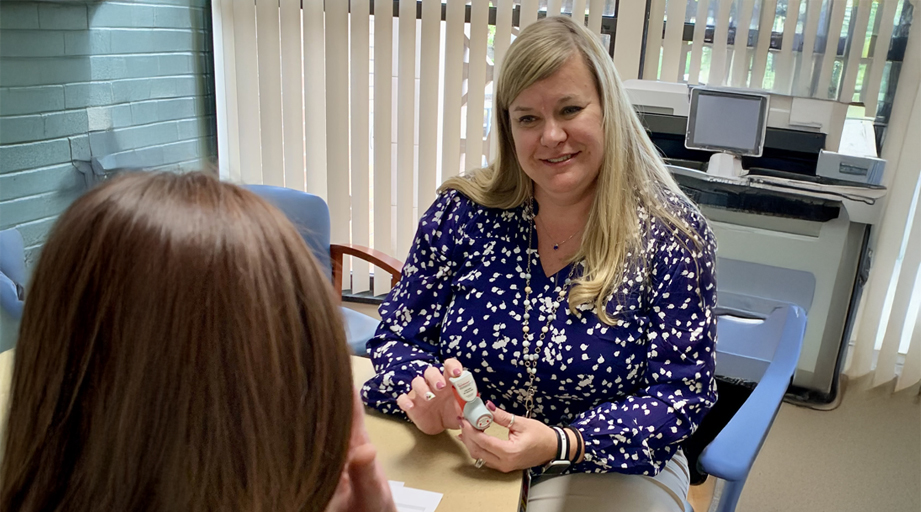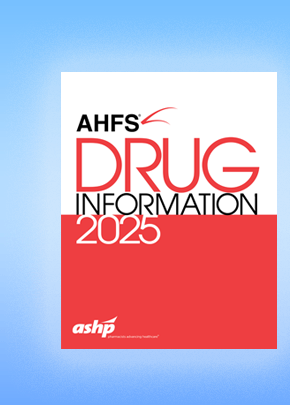
Fifteen percent of Americans live in rural settings, where factors such as geographic isolation, lower socioeconomic status, and higher rates of high-risk health behaviors contribute to disparities in chronic disease, substance use disorder, maternal health, and other conditions.
In Rural Access to Care: Pharmacist Practitioners Leading the Charge for Health Equity, held at the Midyear Clinical Meeting & Exhibition in Anaheim, presenters proposed one way to help close these gaps: lean on the medication experts.
The Dec. 3 session, moderated by Tera D. Moore, national program manager for clinical practice integration and model advancement at the U.S. Department of Veterans Affairs (VA), made the case for integrating pharmacists into team-based models. She and her co-presenters also described real-world examples of improving rural access to primary and specialty care and offered strategies for replicating that success in rural communities.
Pharmacists’ involvement with patient-centered comprehensive medication management (CMM) has a demonstrated positive impact on patient engagement, medication adherence, team satisfaction, and more. These outcomes are essential for achieving the quintuple aim of high-performing health systems: better care, reduced healthcare costs, improved patient experience, provider wellbeing, and — newest on the list — health equity.
“The COVID-19 pandemic really forced practitioners, health care leaders, and policymakers to grapple with the profound health inequities that were exposed,” shared Heather L. Ourth, assistant chief consultant of clinical pharmacy practice program and outcomes assessment for the VA.
Ourth anchored the presentation on the concept of pharmacoequity, or ensuring that all patients get the most benefit from advances in pharmacology. As a case study, she described the multi-year, multi-cycle Clinical Pharmacist Practitioner Rural Veteran Access (CRVA) initiative. Between fiscal years 2017 and 2023, 255 pharmacists were hired to support veteran care in these areas of need across dozens of VA facilities.
The first phase of the program, called CRVA Legacy, provided CMM services to more than 230,000 veterans, 58% of them from rural areas who otherwise may not have interacted with a pharmacist for their care. Over time, the initiative has expanded beyond primary care to other practice areas, including substance use disorder treatment, mental health, and pain management.
Christine Martinez-Vigil is director of pharmacy services of El Centro Family Health, a Federally Qualified Health Center in northern New Mexico composed of 25 primary care, dental, and school-based clinics. In rural Rio Arriba County, where she practices, 20% of residents live in poverty and only 68% have their high school diploma. Only 63% have broadband internet, and it’s not uncommon for patients to drive up to two hours to see a healthcare provider.
These social determinants of health help explain why Rio Arriba ranks 31 out of 32 New Mexico counties for overall health outcomes. “Where you live should not matter if you live, but unfortunately it does,” Martinez-Vigil said.
But she and her pharmacy colleagues are helping to break down these health equity barriers. In 2001, El Centro was awarded a grant to create innovative approaches to providing CMM services for patients with type 2 diabetes. Pharmacist practitioner visits included complete drug regimen reviews, ongoing patient education, and foot exams to help prevent lower extremity amputations.
As a result, El Centro patients reduced their glycated hemoglobin (A1c) by an average of 1.3 percentage points and saw marked improvements in blood pressure and cholesterol levels. The initiative has demonstrated the value of pharmacy to patients and colleagues alike. “It’s really good to team up and find that provider champion in your organization that going to help support your services,” said Martinez-Vigil.
Any pharmacy leader looking to implement a similar program must start on a strong foundation, presenters stressed. That starts with performing a gap analysis to identify areas of care where pharmacists can offer the most benefit. You must consider the available technology, such as whether pharmacy care can be delivered through telehealth, which can be a boon for rural patients without reliable transportation.
Also, the scope and role of the pharmacist practitioner should be clarified from the start. A collaborative practice agreement (CPA) can formalize the relationship between a pharmacist and a collaborating prescriber in a team-based model.
Expanding pharmacy practice within rural America is not without its challenges. For example, members of the interprofessional team who have not worked directly with a pharmacist before may need convincing. And while telehealth can expand healthcare access in remote areas, it can also make it harder to gel as a healthcare team.
The presenters encouraged pharmacy leaders to gain buy-in from key stakeholders before embarking on any team integration effort. Proactively communicating patient success stories, outcomes data, and cost savings will demonstrate why integrating pharmacist practitioners is a sustainable way to improve health equity.
“As a pharmacist practitioner, you can make change in any place that you can work,” said Martinez-Vigil. “The possibilities are endless.”






